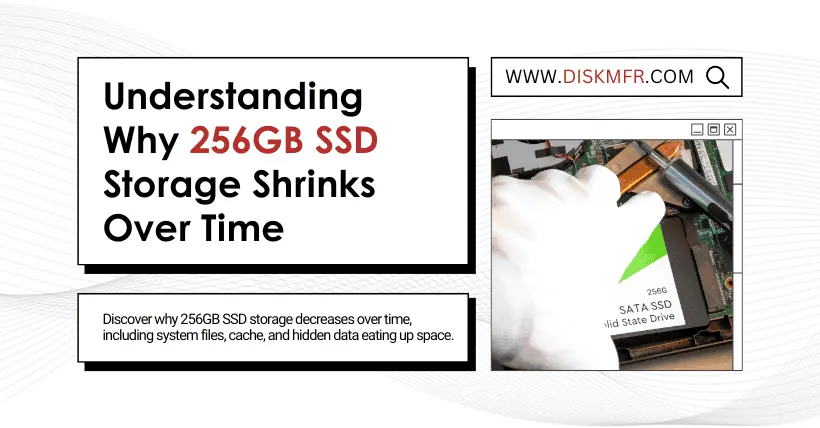The primary reason for the decline in the availability of 256GB SSDs is that their small capacity has made them unpopular among buyers. Additionally, the industry no longer needs to use small-capacity drives to handle low-quality NAND chips. Most small-capacity SSDs on the market are made using capacity-reduced chips, rather than chips inherently designed to be small in size.
When NAND chips are manufactured, not all of them meet quality standards; some have too many defective blocks, rendering them unable to provide their intended full capacity. To salvage these chips, manufacturers disable the defective portions, reducing their usable capacity, and sell them as lower-capacity drives.
For example, if a manufacturer produces a batch of TLC NAND chips with a nominal capacity of 1TB per chip, the SSDs using these chips would have a 1TB capacity. However, if a chip has too many defective blocks, its usable capacity might shrink to 500GB after the defective portions are disabled.
What happens to these reduced-capacity chips? Instead of discarding them, manufacturers sell them as 512GB SSDs. The same logic applies to 256GB SSDs—when even 500GB can’t be achieved due to excessive defects, the remaining capacity might only be 256GB, so they are sold as 256GB drives.
This is the reality of most SSDs on the market: chips with varying degrees of defective blocks are used, and the final drive capacity depends on how much usable space can be salvaged.
There are even worse-quality chips, often referred to as “reject chips” or “downgraded chips,” which may only provide 128GB or even 60GB of usable capacity. These chips consist mostly of defective blocks and are considered substandard.
Reputable SSD manufacturers avoid using such chips because they result in poor stability, low performance, and high failure rates. For high-quality SSDs, these chips are simply unqualified.
However, cost-cutting players in the market find ways to use these low-quality chips. What high-end manufacturers discard, others utilize—especially second-tier manufacturers that can’t produce their own NAND chips. These “black chips” or downgraded chips often end up in unbranded SSDs and USB flash drives.
A few years ago, when NAND chips couldn’t be domestically produced in China and YMTC chips had not yet entered mass production, these downgraded chips were in high demand. At the time, SSD prices were high, and there was a significant market for 256GB drives.
Unbranded manufacturers would use these downgraded chips to assemble SSDs. A common configuration was a 2258XT controller paired with four downgraded chips, each providing about 60GB of usable capacity, resulting in a 256GB SSD. With a controller costing around 30CNY and the chips costing about 40CNY, the total material cost was under 100CNY. After being encased in a shell, these drives could sell for 300CNY. Even today, many of these cheaply made drives can still be found on platforms like Xianyu.
As YMTC began mass production of chips, SSD prices fell, and small-capacity drives lost their appeal. The market for these drives has shrunk, and the low-quality chips are now primarily used in USB flash drives.
Today, most USB flash drives, aside from those using traditional monolithic chips, are built with these downgraded chips. Many high-speed USB drives advertised with read and write speeds exceeding 500MB/s are actually built with downgraded chips.
This shift has led to most chips below 256GB being sold to USB drive manufacturers, rather than being used for SSDs. Combined with the declining demand for small-capacity SSDs, this explains why 256GB SSDs are becoming less common.
Related:
- How Wafer Sawing Boosts Chip Yield and Reliability?
- Signal Chain Chips: Bridging Real and Digital Worlds
- TSMC Breakthrough: 1000W Chip with 40x Performance Gain
- Apple M5 Series Leak: CPU-GPU Separation, N3P Process
- Glass Chip Revolution: Intel, AMD, Samsung to Launch Soon
- Intel Four CEOs Leave the Company in Turmoil and Chaos
- TSMC 2nm Chip Yield Rate Unveiled: What to Expect in 2025
- Apple Finally Says “No” to Qualcomm After 6 Long Years
- The Global Chip War: What’s Behind the Fierce Competition?

Disclaimer:
- This channel does not make any representations or warranties regarding the availability, accuracy, timeliness, effectiveness, or completeness of any information posted. It hereby disclaims any liability or consequences arising from the use of the information.
- This channel is non-commercial and non-profit. The re-posted content does not signify endorsement of its views or responsibility for its authenticity. It does not intend to constitute any other guidance. This channel is not liable for any inaccuracies or errors in the re-posted or published information, directly or indirectly.
- Some data, materials, text, images, etc., used in this channel are sourced from the internet, and all reposts are duly credited to their sources. If you discover any work that infringes on your intellectual property rights or personal legal interests, please contact us, and we will promptly modify or remove it.








